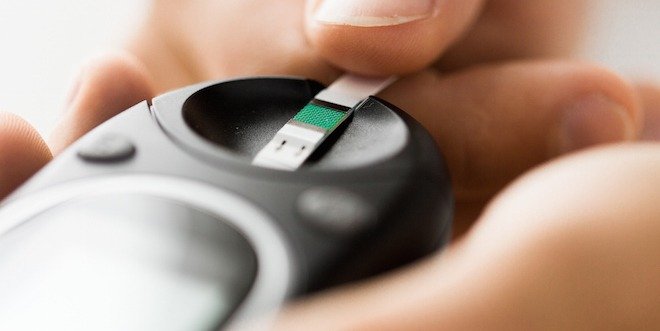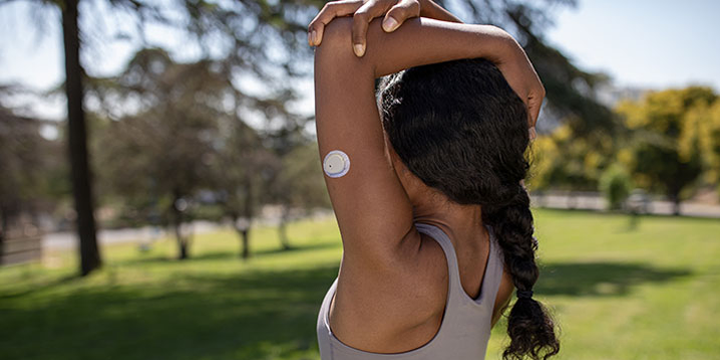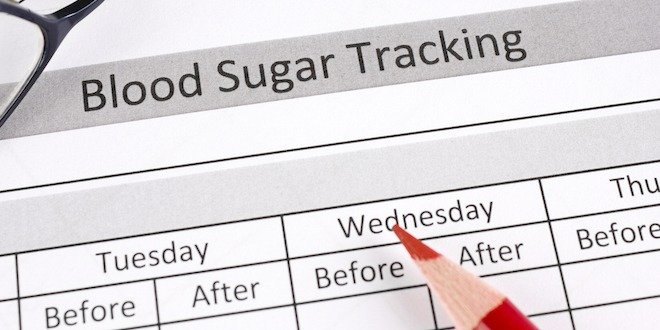
If you have diabetes, it is important that you check your blood glucose levels at regular intervals. Read on to learn more about how to check blood sugar.
Why check blood sugar
Regular blood sugar monitoring is one of the best things you can do to manage your diabetes. When you test your blood sugar at frequent intervals, you’ll be able to see what effect certain things have on your blood sugar, including the foods you eat, the medicines you are taking and physical activity. You’ll also be able to detect patterns of high or low blood sugars and understand the reasons for them.
How to check blood sugar
You can check blood sugar by using a blood glucose meter, a continuous glucose monitor, or by getting an A1C test.
Blood glucose meter
The most common type of blood sugar monitoring is done with a blood glucose meter, a small needle called a ‘lancet’ and a ‘test strip’.
Here are the steps to use a blood glucose meter:
- Have your meter, lancet and blood glucose test strips available.
- Wash your hands thoroughly with soap and water. Make sure you have completely dried them as water may interfere with the test. Avoid using an alcohol wipe as it dries out the skin which makes it tighter and more painful to prick.
- Insert the test strip into the meter.
- Insert a lancet into the lancing device. Adjust the depth setting if necessary (deeper for thick skin, shallower for thin skin.
- Gently prick the side of your finger. Gently squeeze the side of your finger if needed to get a drop of blood.
- Touch the edge of the test strip to the drop of blood on your finger and keep it there until the meter shows your blood glucose level on the screen (usually within a few seconds).
- Safely dispose of the used lancet and test strip in an appropriate sharps container.
Because blood glucose meters only measure your blood sugar at one moment in time, people with diabetes – especially those who take insulin – often have to check their blood sugar several times a day using this method.
You can buy a meter at most pharmacies. There are many varieties – with all kinds of options – so talk to your healthcare team or pharmacist about which blood glucose meter is right for you. Be sure to get the proper training: your healthcare team or pharmacist can help you learn how to use your blood glucose meter correctly and how often to check your levels.
Continuous glucose monitor
A continuous glucose monitor (CGM) records your blood sugar level every few minutes and keeps track of it over time. A CGM has 3 main components:
- A tiny sensor that is inserted under your skin, often the skin on your stomach or arm, with a sticky patch that helps it stay there.
- A transmitter that records and communicates information about your blood sugar.
- A software program that is stored on a smartphone or an insulin pump, which receives the information from the transmitter.
Because a CGM measures your blood sugar continuously, it can actually identify changes and trends that are occurring, for example, if your blood sugar is going to be too high or too low in the next 10 to 20 minutes. Seeing these trends can help you prevent low blood sugar (hypoglycemia) or reduce the risk of high blood sugar (hyperglycemia).
A1C test
An A1C test (A1C is short for ‘glycated hemoglobin’) is a blood test that measures a person’s average blood sugar levels over the past 2 to 3 months. To do an A1C test, your healthcare team takes a sample of your blood, which is then sent to a laboratory to analyze and determine your A1C level.
When to check blood sugar and A1C
Your diabetes healthcare team can help you determine how often – and what time of day – you should check your blood sugar. Some of the most important times to check include:
- When you are in a fasting state (i.e. you haven’t eaten for 8 hours or longer)
- Before meals
- 2 hours after eating a meal
- At bedtime
- Before and after physical activity
- When you are sick
Recommended target ranges
According to Diabetes Canada, the recommended blood sugar targets for most people with diabetes are:
| Measure | Target |
| Before meal or fasting blood sugar | 4 to 7 mmol/L |
| Blood sugar 2 hours after start of a meal | 5 to 10 mmol/L (or 5 to 8 mmol/L if you are not meeting your target levels) |
| A1C | 7% or lower |
Checking your blood sugar regularly is one of the most important things you can do to help manage your diabetes. Talk to your diabetes healthcare team about blood glucose meters and continuous glucose monitoring systems to see which device might be right for you. And be sure to have your A1C tested regularly!




